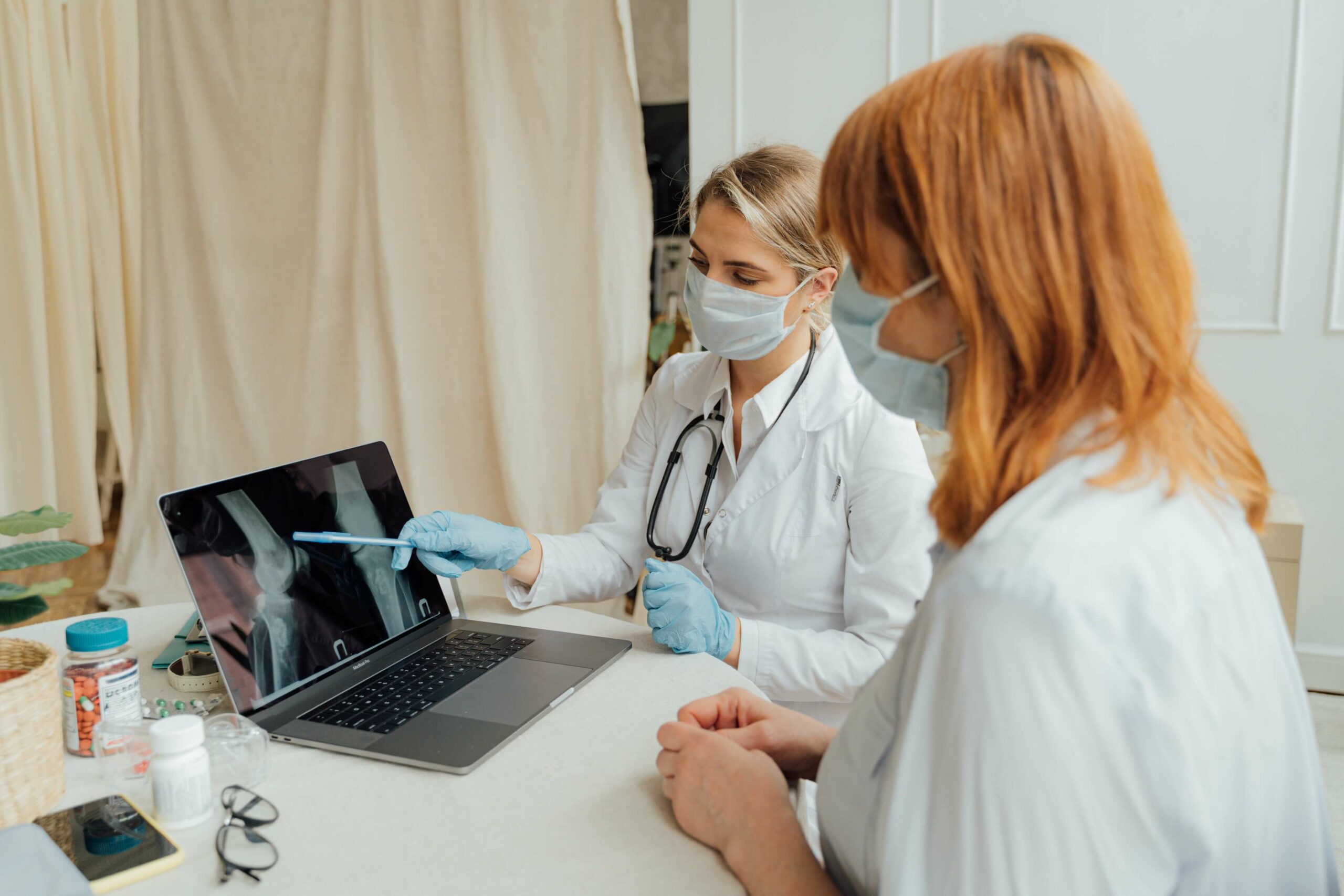X-rays, CT scans (computed tomography), and MRIs (magnetic resonance imaging) are all non-invasive imaging modalities that allow healthcare professionals to obtain detailed images of the body's internal structures for diagnostic purposes.
X-rays
The "X" in "X-ray" stands for "X-radiation", which is a form of electromagnetic radiation with high energy that can pass through the body to create images.
X-rays are the most common type of imaging used in orthopaedic care. It is used as a diagnostic tool to see bones and joints and to detect fractures, dislocations, and other injuries. X-rays can also reveal changes in bone density, such as osteoporosis, and help monitor the progress of orthopaedic treatments.
What Is It Like To Get An X-Ray?
During an X-ray procedure, you will be positioned between an X-ray machine and a film or digital detector. The machine emits a controlled dose of radiation that passes through your body, and the detector captures the transmitted radiation to create an image.
You will be asked to remain completely still, for best results. The procedure is painless - in fact, you won't feel it at all.
Having an x-ray means that you are being exposed to a small amount of radiation - generally considered safe. Healthcare professionals who conduct X-rays all day, take precautions to minimise their own radiation exposure by using lead aprons to shield themselves from the radiation.
What Are X-Rays Used For?
X-rays produce two-dimensional images of skeletal tissue and show limited detail when it comes to visualising soft tissues, such as muscles, tendons, and ligaments.
Fluoroscopy uses continuous X-ray beams to produce real-time moving images of internal structures, which is very useful especially when treating movable joints.
X-rays are therefore often used to diagnose bone conditions.
Computed Tomography (CT) Scan
CT scans, also known as computed tomography scans or CAT scans use a combination of X-rays and computer technology to create detailed cross-sectional images of the body - much more detailed than traditional X-rays.
What Happens During A CT Scan?
During a CT scan, the patient lies on a table that moves through a doughnut-shaped machine called a CT scanner. The scanner emits a series of X-ray beams from different angles around the body.
Detectors within the scanner measure the amount of radiation that passes through the body, and a computer processes this information to create cross-sectional images, or slices, of the body. These slices can also be stitched together to form a three-dimensional digital image of the body.
What Are CT Scan Images Used For?
In orthopaedic care, CT scans are used for fracture assessment, preoperative planning, joint evaluations, assessing spinal conditions and investigating bone tumours and infections.
Magnetic Resonance Imaging (MRI)
Magnetic Resonance Imaging (MRI) uses a strong magnetic field and radio waves to generate detailed cross-sectional images of the internal structures of the body, including bones, joints, ligaments, tendons, and soft tissues.
What Is It Like To Get An MRI?
During an MRI, you'll lie on a table that slides into a cylindrical scanner. This scanner has a powerful magnet that aligns the hydrogen atoms in your body's tissues.
Then, radio waves are applied to your body, making those hydrogen atoms emit signals, which the scanner captures. All these signals are processed by a computer, creating highly detailed and three-dimensional images.
You won't feel any sensations during the procedure, though it is worth mentioning that being confined within the scanner itself can cause some discomfort if you are claustrophobic.
What Are MRIs Used For?
MRI is particularly valuable in orthopaedic care because it provides detailed images of the soft tissues, such as muscles, tendons, ligaments, and cartilage, which may not be clearly visible on X-rays.
Understanding X-rays, CT Scans And MRIs
X-rays are great for visualising bones and spotting fractures, but they aren't very detailed. CT scans offer detailed cross-sectional images of bone from various angles, which could be stitched together to form 3D structures. MRIs can provide highly detailed images of both bones and soft tissues.
Each imaging method has its strengths and limitations, and the choice depends on the specific situation and information needed for accurate diagnosis and treatment planning. These technologies have transformed orthopaedics, helping professionals get precise visuals of the musculoskeletal system for diagnosis, treatment, and monitoring of various conditions and injuries.


 71–75 Shelton Street, Covent Garden, London, WC2H 9JQ
71–75 Shelton Street, Covent Garden, London, WC2H 9JQ +44 (0) 20 3376 1032
+44 (0) 20 3376 1032



